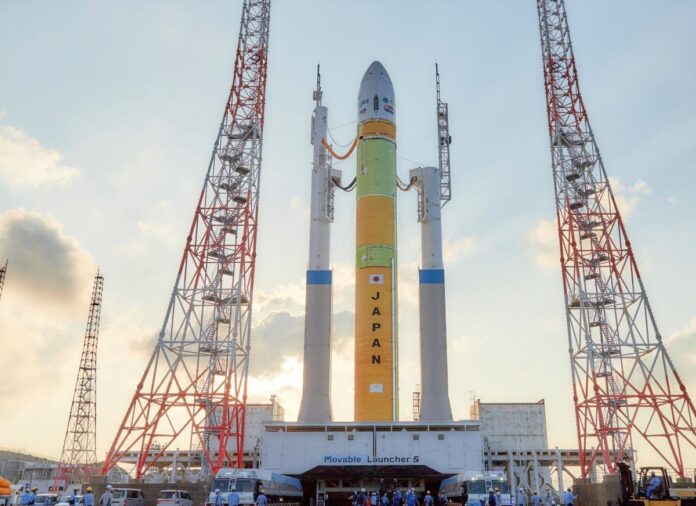Japan’s next-generation H3 rocket will fly for the first ever on Tuesday evening (Feb. 14), and you can watch the action live.
The H3 is scheduled to launch on its debut mission from Tanegashima Space Center Tuesday at 8:37 p.m. EST (0137 GMT and 10:37 a.m. Japan Standard Time on Feb. 15).
Watch the liftoff live here at Space.com, courtesy of the Japan Aerospace Exploration Agency, or directly via JAXA (opens in new tab). Coverage is expected to begin around 8 p.m. EST (0100 GMT on Feb. 15).
Related: The history of rockets
Tuesday’s liftoff will be a big moment for JAXA, which has been working with Mitsubishi Heavy Industries for a decade to develop the new launcher and has high expectations for it.
“The H3 rocket is Japan’s new flagship rocket,” JAXA wrote in a description of the vehicle (opens in new tab).
“It is being developed as a successor to the H-IIA rocket currently in operation so that Japan can continue to have a means of transportation to space,” the agency added in another H3 explainer (opens in new tab). “Looking ahead to the next 20 years, we are aiming for a world of operation that maintains the industrial base by stably launching about six satellites every year. To that end, orders for private commercial satellites from the launch services market, as well as government satellites, are essential.”
The H3 stands either 187 feet or 207 feet tall (57 or 63 meters), depending on whether it’s flying with a “short” or “long” payload fairing. The rocket is capable of delivering “4 tons or more” to a 310-mile-high (500 kilometers) sun-synchronous orbit and “6.5 tons or more” to geostationary transfer orbit, according to its JAXA specifications page (opens in new tab).
Though Tuesday’s mission is a test flight for the H3, the new rocket will be carrying an operational payload — the Advanced Land Observing Satellite-3 (ALOS-3), also known as DAICHI-3.
If all goes according to plan on Tuesday, the H3 will deliver ALOS-3 to a sun-synchronous orbit. The 3-ton satellite is capable of resolving features as small as 2.6 feet (0.8 m) wide on Earth’s surface from its final, 416-mile-high (669 km) perch, according to JAXA officials.
The satellite’s data will aid disaster monitoring and response, as well as a number of other fields.
“The observed data from ALOS-3 is expected to lead to progress in the various fields due to its unique imaging capabilities; it will make a significant contribution to upgrading global geospatial information and research and application for monitoring of the coastal/vegetation environment,” JAXA wrote in a description of the satellite (opens in new tab).
Tuesday’s mission will be the second of the year for a Japanese rocket. An H-IIA successfully lofted Japan’s IGS Radar 7 surveillance satellite on Jan. 25.
Mike Wall is the author of “Out There (opens in new tab)” (Grand Central Publishing, 2018; illustrated by Karl Tate), a book about the search for alien life. Follow him on Twitter @michaeldwall (opens in new tab). Follow us on Twitter @Spacedotcom (opens in new tab) or Facebook (opens in new tab).

